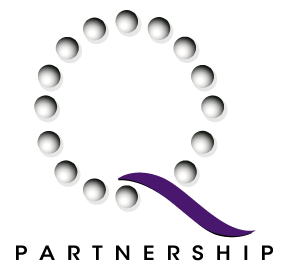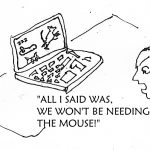Of all the things topical in the world of work this year, how to manage team performance certainly competes for centre stage, alongside concerns about keeping businesses afloat beyond 2020. Some would argue that effective performance management need never have been about physical contact in the first place. However, there are undoubtedly some new sensitivities arising out of a remote workplace. These must be considered, in addition to the urgent need to keep team performance soaring, in spite of suddenly working apart.
New kids on the block – So, while you may have long figured how to manage your regular Joe and Jane’s performance, Anthony the new guy from the competitor, or from across the border, may present a new challenge for you. You may not get the chance physically to meet or meet ‘enough’ with all your new recruits. The usual induction ‘indoctrination’ is compelled to adopt a new tack. This makes it difficult for the sensory leader to judge progress, get a feel for passion, commitment and alignment, much less watch over shoulders to see if indeed they are representing your brand well, or bonding well with other team members.
Performance challenges? In the absence of face-to-face supervision, it becomes quite an art distinguishing between an employee who is new and shy to express uncertainty, or a contributor who was solid in the past but has reached the peak of their performance threshold. A manager, who is used to ‘checking in’ quite frequently in the day to assess progress and alignment, might be frustrated by the lack of touchpoints. With predominately written communication, void of intonation and physical expression, it is too easy to read wrong messages around accountability and responsibility. Likewise, employees, who are less than confident, may easily feel a lack of support, clarity or inclusion.
Sometimes team interaction can feel quite strained,when getting answers to what seem like simple questions requires extra effort reaching out to colleagues based at home. Ever noticed how it is easy, in an ever-churning spew of correspondence, to miss a response to one key question or another? Add to that, the social isolation that comes from being cooped up in 4 walls day and night, with no intelligent conversation or stimulating banter to relish but your emails. Or, for some, top that with distractions at home. Home might be a shared space, with roommates, family, pets, significant others. For yet more workers, home presents the challenge of sub-optimal workspaces, coupled with unexpected added parenting responsibilities, as childcare centres and schools closed down for Covid-19.
The range of challenges of performing whilst at home can be as wild as one’s imagination. Here’s how a team leader can attempt to mitigate these with some success and create an enabling environment for his/her team.
Paint a bigger picture. As it’s easy to go off track when teams are dispersed, it’s important to ensure that employees’ efforts continue to align with the organisation’s overall mission. Be transparent about company goals for 2020 and beyond – what has changed? What remains the same? What needs to be held in abeyance? Translate these into a revision of each person’s KPIs (key performance indicators), so that everyone becomes aligned to the company radar.
Performance guidance and review. Do stick to your formal quarterly/bi-annual performance reviews but create several more informal check points in the build up to the next review. Once you have articulated company goals and agreed on targets, check in with each individual and team at least weekly, to get a feel of how they are progressing, where they might need additional clarity, tools or other support. If your team size makes weekly interaction impossible with each individual team member, set a weekly team discussion for each Monday or Friday. Get everyone around the virtual room to share progress achieved in the week prior to your meeting, then focus the meeting time on discussing challenges, synergies, clarifying grey areas and providing feedback.
Encourage pyjama pants. Depending on the work you do, a fixation on crisply ironed uniforms, designer suits and shiny shoes may be a thing of the past. You certainly won’t be able to tell who has brushed their teeth over Zoom, or perhaps who is working from a comfortable spot in their bed over Microsoft Teams. Save for client interactions, focus on the nuts and bolts of work, and let the lovers of pyjama pants be during internal interactions. You have more to gain from being flexible and adaptive. Empathise. It’s not likely the parents in your team want the risk of the toddler’s soup on their Versace.
Praise, praise, praise. Be sure to be generous with positive reinforcement in acknowledging good work. Say it like you mean it – in that weekly team meeting, on the group chat, over emails or telephone calls. Your team cannot see you often, but they can sense approval and encouragement from your messaging. If you intend to keep your team firing on all cylinders, now is not the time to be mean-spirited with positive reinforcement. The converse is true. Where improvements are needed, leave what might be considered particularly harsh feedback for one on one discussions. In the team discussion you may be compelled to note that the desired quality of work was not achieved, cover basic points needing improvement, then state that you will provide further one on one guidance after the team meeting.
Become the chief communication champion. Make it your (new) business to pick up the vibes and manage communication within your team. Be alert to employees ‘checking out’, giving off signs of frustration, disagreement, confusion or reduced buy-in. If you do nothing else, oil the communication machinery to ensure team members are talking, sharing and hearing each other. Make yourself open and available for bouncing off ideas, problems solving and giving extra guidance. Yes, you do have a life too – however, try to be more responsive now, rather than less. Find a spot in your day to clear emails and messages and return calls. Look out for the wall flowers and solicit their input. Their contributions may pleasantly surprise you. Don’t let the communication ball drop in your court.
Provide different communication technology options. Emails alone are insufficient. Remote workers benefit from having “richer” technology, such as video conferencing, that gives participants many of the visual cues they would have if they were face-to-face. Video conferencing has many advantages, especially for smaller groups: visual cues allow for increased “mutual knowledge” about co-workers and also help reduce the sense of isolation among teams. Video is also particularly useful for complex or sensitive conversations, as it feels more personal than written or audio-only communication.
Provide opportunities for remote social interaction: One of the most essential steps a manager can take is to structure ways for employees to interact socially (that is, have informal conversations about non-work topics) while working remotely. This is true for all remote workers, but particularly for workers who have been abruptly transitioned out of the office. The easiest way to establish some basic social interaction is to leave some time at the beginning of team calls just for non-work items (e.g. “We’re going to spend the first few minutes just catching up with each other. How was your weekend?”).
As the year ticks to its end, many are sorry that the usually sought after, generous, loud and somewhat rowdy end of year office party will not happen. Give the team good cause for cheer – do not let social distancing stand in your way! December 2020 is the perfect opportunity to recreate the good vibes of team. Announce that the end of year party will take place – online! Challenge your team to make it exciting and come up with a catchy party theme. Plan a dress-up and task your Generation X or out-the-box thinkers to create an out of the norm programme of games, speeches and share points. Your tech whiz guys could have fun creating party photo souvenirs for takeaways on the virtual video wall. Have sumptuous, cheerfully wrapped goodies (small cakes, cupcakes or pizza etc) and perhaps a bottle, delivered to each of your team members’ homes just in time for the party kick off. Then CELEBRATE with your team. Celebrate business continuity, health, team contribution and a hopeful 2021. What better opportunity to revive team interaction and set everyone off to a great start in 2021 than this December.
Grow elephant ears. Listen more, listen harder. Hear employees’ concerns, anxieties and empathise with their struggles. Even a general question such as “How is this remote work situation working for you so far?” can elicit important information that you might not otherwise hear. Once you ask the question, be sure to listen carefully to the response, and briefly restate it back to the employee, to ensure that you understood correctly. Let the employee’s stress or concerns (rather than your own) be the focus of this conversation.
Model good stress management. Be deliberate in demonstrating calmness in managing sudden changes or crisis situations. If you signal stress and helplessness, you may well trigger what Daniel Goleman calls the “trickle-down” effect on employees. Effective leaders take a two-pronged approach, both acknowledging the stress and anxiety that employees may be feeling in difficult circumstances, but also providing affirmation of their confidence in their teams, using phrases such as “we’ve got this,” or “this is tough, but I know we can handle it,” or “let’s look for ways to use our strengths during this time.” With this support, employees are more likely to take up the challenge with a sense of purpose and focus.
Man overboard!! Alas, at times you may note someone’s performance change for the worse. Be objective – consider their past record. It is important to take a holistic view and separate the underperformance from the underperformer. What has changed? Embark on some diagnostic work together with your struggling team member. Did we provide the right remote working tools, support and feedback? Have things changed within the company or is the employee suffering personal difficulties? Bear in mind that remote working can be challenging and not everyone is capable of self-management. Focus on the facts, rather than emotion. Mutually note lessons learned and draw up a recovery path. Reassure them that missteps are okay when corrected and reiterate that you’re there for guidance. What if it doesn’t work out? Then the usual responses to persistent underperformance apply. You want to make sure that if things do come to a head and a separation is inevitable, your employee leaves as a good brand ambassador. Never do you want her/him to go and tell the world that s/he was a sorry casualty of the organisation’s – and your – inability to manage change.
Strive for balance. Keep a keen bird’s eye view of the workload per employee and its distribution across your team. Expect that people’s capacity may change – whilst working from home some might be able to do much more, others a lot less. This doesn’t make anyone ‘good’ or ‘bad’ – just remember that for many, we have pressed the fast forward button on work and yet the home environment has yet to be modified to fit. Monitor coping levels and sniff out where capacity has increased or dropped since working remotely. If one employee clearly has way too much on their plate, and another has space to help, quickly reallocate resources. It ensures everyone is working healthily within their weekly capacity – protecting people from the worst effects of “over-engagement”.
A final word…
You cannot hover like a drone. Even if you could, your emotional and other resources would soon be well spent. Try trust! As with all distance relationships, trust is essential for success. Invest belief in each employee being self-disciplined, in control of their own productivity and comfortable working without supervision. Allow them to master their own workflow. Give them room to decide the best way to work. Focus on outputs rather than activity.
Build up your team confidence so you get to the point where remote colleagues work together seamlessly without frequently pressing the panic button. Hazarding a guess, once you taste the liberation of managing performance and motivation in this new way of work, you might like it more!!
All that said, still struggling to figure out how to integrate your in-house performance management culture and systems with this new way of work? Give us a call, we will be happy to help.






